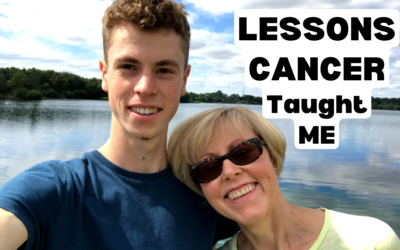Improve your Posture: Why Bother
Proper posture plays a crucial role in the optimal functioning of joints and muscles. By aligning the body in the ideal way we are sharing the load between our many joints, muscles and tendons. I am in no doubt that poor posture has a part to play in the development and perpetuation of musculoskeletal Pain and dysfunction. Pilates is the perfect way to improve your posture and manage back pain.
- Proper head and neck posture is an important consideration for optimal function of the neck and upper limb
- Pelvic position is an important consideration if you are experiencing pain in the lower back or around the hip and buttock
Improve your posture with Pilates
Pilates is not just an exercise class you attend once a week, although it is highly beneficial. I suggest we bring the Pilates principles of ideal posture and alignment into every movement we make. Ok, maybe not every movement…
The first step is to develop your awareness of how your body parts are positioned. As you gradually improve your awareness of your body position or ‘posture’ you can then begin to make the necessary adjustments to improve posture and alignment.
Good posture begins with the Pelvis
The Pilates fundamental principle of Posture and alignment begins with the Pelvis. We can think of the Pelvis as the foundation. The centre of gravity or ‘body mass’ is located within the Pelvis at the level of the second sacral vertebra.
When the pelvis is Neutral it automatically brings the lumbar spine into neutral, this allows the spine to stack up above it in the most ideal ‘S’ shape; also referred to as the Natural Curves of the spine. This ‘S’ shape arrangement of the bones allows the spine to distribute the load most effectively between all the appropriate load-bearing structures; bones, discs, ligaments, muscles etc. This minimises the risk of pain and injury as we stand, sit, drive, walk, lift heavy grandchildren or play sports. It also has the added benefit that it improves our posture.

Finding Neutral
But how do we know if the pelvis is Neutral? If you are standing think of the pelvis like a bucket filled with water and in standing if you rock the pelvis forwards so the water would tip out of the front and then backwards so the water would tip out of the back, come to rest in the mid position with the pubic bone, pointy bone at the front of each side of the pelvis and the navel in the same vertical plane, the pelvis should now be Neutral.
Try this
Next time you are sitting on a dining chair, notice the bones you can feel underneath you in your bottom; these are the ischial tuberosities at the bottom of the pelvis. Think of these bony points as the feet of the pelvis which ideally should point directly downwards when we sit. At the same time the most pointy part at the front of the pelvis, or ASIS should point directly ahead of you, and now the pelvis is Neutral.
Poor Posture and Pain
It’s a case of chicken and egg when it comes to posture and pain. Pain can cause us to hold and move our bodies in ‘less than ideal’ ways. Often this happens automatically without our being aware of it. On the other hand sitting cross-legged, standing on one leg or with the hips thrust forward can all contribute to painful sensations in the back and legs.
Vladamir Janda described a common postural presentation; standing with the pelvis rocked forwards and an increased lumbar curve or lordosisis, which he called the ‘lower crossed syndrome’.

If we stand in this position often enough and for long enough then it causes a recognisable pattern of muscle weakness and tightness. It leads to weak abdominals and weak Gluteus Maximus in combination with tight hip flexors and tight spinal erectors. This forward-tilted pelvis when we stand can contribute to the perpetuation of back pain and will even increase the appearance of a pot belly.
The Lizard Brain is to blame for poor posture
Our movement habits emanate from our primitive programming. Energy conservation is our top priority, just in case we need to run from a tiger at any point. Unfortunately, this propensity for energy-efficient postures means you will find us ‘hanging’ on our ligaments with muscles doing the least they possibly can. That is, unless we consciously intervene and ‘make a point’ of holding ourselves up using our muscles.
Posture Perfect? Mindful Movement is the Key
Making change takes commitment and regular practice, but it could be as simple as engaging the brain as we move around in our daily lives. Doing your jobs, hobbies and sports mindfully with a part of your attention focused on HOW you sit, stand and move.
If you consider the pelvic position, putting our pelvis in neutral and activating the abdominals and gluteals, will minimise the stresses and strains on the spine. Incorporating the Pilates principles of posture and alignment into your daily life can be helpful if you have back pain or not.
Read more about Pilates for back Pain HERE
Practice makes for improvement
At the start of every class I teach, we begin with a posture check to review the ideal placement of the foot, leg, pelvis, shoulders, head and neck. With increased awareness and regular practice, improved posture soon becomes automatic.
Pilates was a game-changer when it came to ridding me of my back pain. With regular practice, to strengthen the deep muscles of the core, back pain can be a thing of the Past.
Improve your Posture: Learn the Pilates fundamentals with Phillipa on YouTube
Whenever you’re ready, here are 3 ways I can help you:
1. Watch my Latest Training
If you want to see how I help my clients Beat Back Pain, then Watch This
2. Book Your FREE Movement Assessment to Beat Chronic Pain
Discover my 3-Step System Helping 45+ Women Break Free From the Cycle of Pain and Fear of Movement to Take Back Control Click Here to schedule your call now
3. If Menopause is on your mind, listen to my Moving through Menopause Podcast. All the things I wish I’d known sooner and some new nuggets of information. Be prepared and embrace ‘the change’ of life! Click Here to Listen
Author: Phillipa Butler. Chartered Physiotherapist












